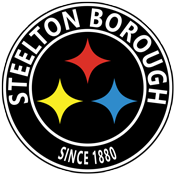Tier II DBP Violation June 4th, 2016
Important Information About the Public Notice Enclosed
The Steelton Borough Water Authority and staff take producing the highest quality drinking water very seriously. Over the past two years, the Authority has invested heavily into infrastructure and operational improvements in response to newer and more stringent environmental testing and reporting standards.
Some residents have asked questions about the Public Notices of non-emergency violations like the one enclosed. Below are answers to some frequently asked questions:
Why am I receiving another drinking water violation notice?
Even though test results for this quarter were below the maximum contaminant level for Trihalomethanes (TTHMs), the overall running average was above the .080 level because of higher results earlier in the year.
TTHM levels are reported on a Running Annual Average, meaning a high result from a previous quarter will impact the average, possibly causing a violation, even if the most recent test results are below the MCL. The RLAA for Steelton has decreased over the last four quarters, but is still above the MCL at Site 700.
Below is a table outlining the previous four quarters of results for Trihalomethanes. As you will see the current quarter is below maximum levels, but previous quarters have kept the Running Annual Average above the MCL.
Are TTHM violations unique to Steelton’s water system?
No. Many wat
er systems in the country are dealing with TTHM violations due to more stringent EPA standards and changes in testing/reporting requirements. Complying with these standards requires older water system’s like Steelton’s to make long term capital improvements that take time.
Why do disinfection byproducts like TTHMs occur in our water?Virtually all water systems have disinfection byproducts of some level due to the fact that chlorine remains the most widely used chemical for water disinfection in the world. According to the Center for Disease Control, “Chlorine revolutionized water purification, reduced the incidence of waterborne diseases across the western world,” and “chlorination and/or filtration of drinking water has been hailed as the major public health achievement of the 20th century.” It is necessary to chlorinate water to eliminate bacteria that causes immediate emergency health risks. No such emergency health risks are occurring due to Steelton’s continued treatment of water.
While chlorination kills harmful pathogens in water (the primary concern of water treatment facilities), the process of chlorine interacting with organic material in water creates what are known as disinfection byproducts, primarily Trihalomethanes and Haloacetic Acids. Factors such as temperature, turbidity (cloudiness of source water), and source water levels influence the amount of organic matter found in the raw water and, as a result, the amount of disinfection byproducts formed during treatment.
However, it is recognized that the removal of immediate pathogenic threats in water through chlorination takes first priority. Higher levels of disinfection byproducts are considered a Tier II non-acute violation (like the one enclosed). A lack of chlorination and the resulting microbial pathogens that would be present in water, represent a Tier I emergency violation.
What is the increased risk for cancer from long-term exposure to disinfection byproducts like TTHMs?
The United Stated Environmental Protection Agency estimates that “drinking 2 liters of water containing 100 ppb THMs every day for 70 years could result in 3 extra cases of cancer for every 10,000 people. The slight risk of increased cancer occurs only after decades of drinking water with elevated THMs.”[1]
Am I required to buy bottled water?
No. The Department of Environmental Protection and EPA clearly state that you do not need to change your source of water.
What if I have concerns about long term health risks associated with TTHMs?
Please consult your physician if you have any concerns about health risks associated with TTHMs.
What is the Water Authority doing to reduce/eliminate DBPs?
The Steelton Borough Authority’s chlorine contact tank project is ahead of schedule. All design and permitting work for the project is complete and the application for PENNVEST funding to finance the $2.9 million project has been submitted. The tank is the most foolproof way of reducing DBPs to levels consistently below the MCL.
At the same time, the Authority is engaged in a Water Distribution System Optimization project. Hydraulic modeling of the water system has been completed which will identify the best areas of the system to make improvements. Further improvements including automatic flushers and agitators/aerators are being considered to supplement the chlorine contact tank improvements.
If you have any additional questions about disinfection by-products or what we are doing, and have done, to ensure your drinking water is safe, please feel free to contact me at 717-939-9842 or Mark Handley at 717-939-0425 Ext. 5110.
Please know that we have worked—and continue to work—diligently to provide the safest drinking water possible. We ask for your patience and understanding as we make the capital improvements needed to address the disinfection byproduct issue.
Douglas E. Brown, Borough Manager and Authority Secretary
Click to Read the Tier II Notification
[1] https://www.deq.state.ok.us/factsheets/water/THMfactsheet.pdf

